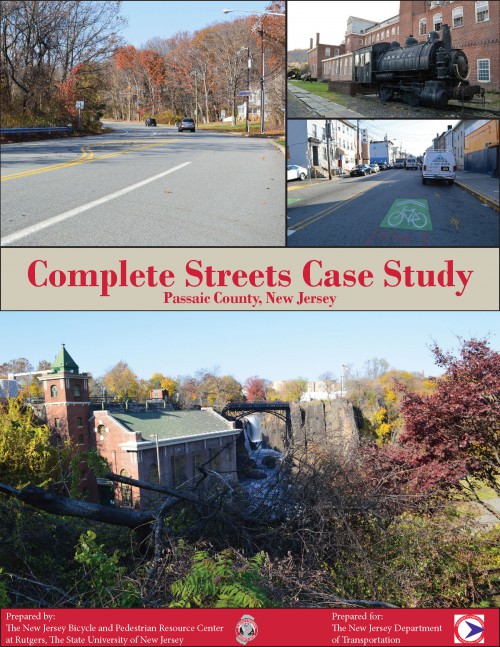In 2009, the New Jersey Department of Transportation adopted a Complete Streets policy which defined a Complete Street as one designed to provide safe access for all users by implementing a comprehensive integrated multi-modal network of transportation options. The benefits include increased safety for all users, connections between origins and destinations, and the promotion of healthier and more livable communities. Since the policy’s adoption, Complete Streets has built momentum throughout the state. As of December 2016, 8 counties and 135 municipalities have followed the lead and adopted their own local Complete Streets policy.
Passaic County was the 7th county in New Jersey to adopt a Complete Streets policy (PDF) and did so in February of 2014. Passaic is the first county in the state to have developed a full Complete Streets implementation plan and framework, entitled “Moving Passaic County: Complete Streets Guidelines.” Since then, the county has led by example, designing Complete Streets—and proving its benefits—in communities across the county. The Complete Streets policy in Passaic County was transformed into an actionable program by a Complete Streets Guidelines and Checklist as proven by the county’s list of Complete Streets achievements.
The Bicycle and Pedestrian Resource Center, part of the Alan M. Voorhees Transportation Center at Rutgers University, has developed a series of case studies intended to highlight Complete Streets leaders in New Jersey. The purpose of this case study, funded by the New Jersey Department of Transportation, is to highlight Passaic County’s Complete Streets policy and accomplishments. The report is based on findings provided in interviews with Michael Lysicatos, Passaic County’s Assistant Planning Director, and Charles Silverstein, Passaic County’s Traffic Engineer.
The report begins with a summary of key findings followed by background information on historical, demographic and land use data collected from county and Census documents. This information is essential in understanding the context of Complete Streets in Passaic County. The report then explores the history of the Passaic County Complete Streets policy, including how the policy was developed, promoted and implemented. Successes and challenges are then highlighted for the benefit of other communities looking to implement Complete Streets and a number of next-steps provide readers with insight into the policy’s future. This report will serve as a valuable tool for engineers, planners, elected officials, and advocates who want to move forward with Complete Streets in their communities.
Read full report: Complete Streets Case Study: Passaic County New Jersey (2016) and Appendix

